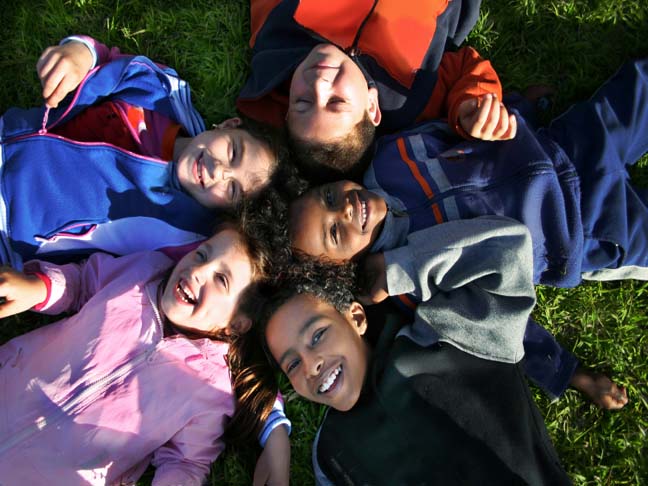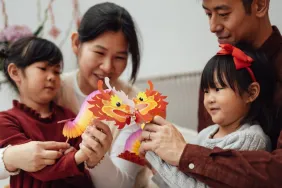Teamwork is an important and vital element of society and it’s never too early to begin learning how to work well in a group environment …

I can hear my husband laughing now as I detest that concept – group socialization… but, that being noted, I do want my children to be socialized (they can make the decision to detest groups later in life) and learn to work with their peers. I don’t know about you, but when my kids get even a whiff of a lesson being taught, they immediately tune out and try their darndest to not enjoy whatever “learning” activity I’m trying to accomplish. Now being wise to their ways, I’m not above trying to fool them but have also thought back to my youthful experiences for inspiration. Here are three games I’ve borrowed from an improv troop I used to “play” with and tweaked them for my children’s benefit.
1: Follow the Leader:
Great for kids of any age. Simple enough right? Have the children line up one behind the other – child in front being the “leader” – and then have the other children imitate that leader. Encourage the leader to get creative (ie: funny walk, arms flapping, head bobbing, fishing pole dance). Make sure each child has a turn to be leader. This activity teaches how to pay attention, follow direction and creativity as well as potential leadership skills. (Supplies = children)
2: Who Am I:
Perfect for children ages 10 & up. Depending on the age range, you should vary the characters. Write names of famous people, cartoon characters etc (that the children know of) on pieces of paper, fold them in half and drop them in a hat or bag. Next, have each child pull one piece of paper, but don’t let them look at the name. Then pin/ tape the paper to their back. When everyone has a character on their back, turn them loose to ask “yes” or “no” questions of each other to guess the identity of their character. This activity teaches listening skills, how to ask developed questions, and how to rely on each other for information. (Supplies: paper, pen, safety pins or tape, hat or bag and children)
3: ABC’s:
Ideal for ages 12 and higher. Have all the participating children stand in a circle facing each other with their hands clasped behind their backs. One child starts by calling out the letter A; another calling out the letter B and so on. The object of the game is to get all the way to Z without anyone calling out a letter at the same time. If two people call out a letter at once, then you start all over at A. This activity teaches listening skills, how to pay attention and teamwork. (Supplies: children)








